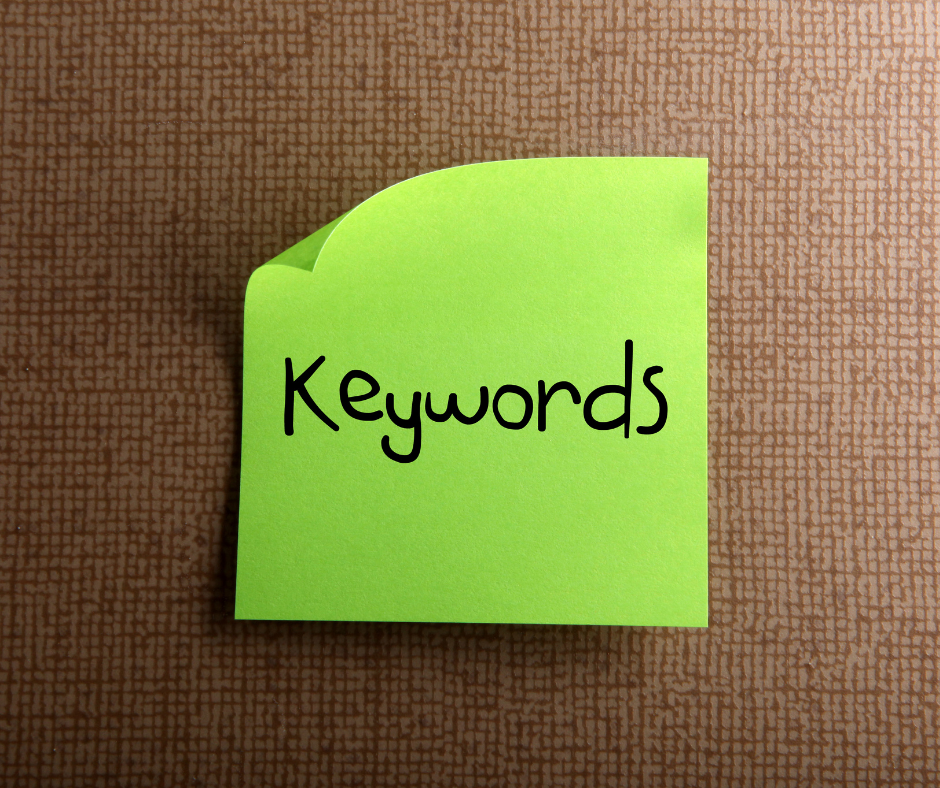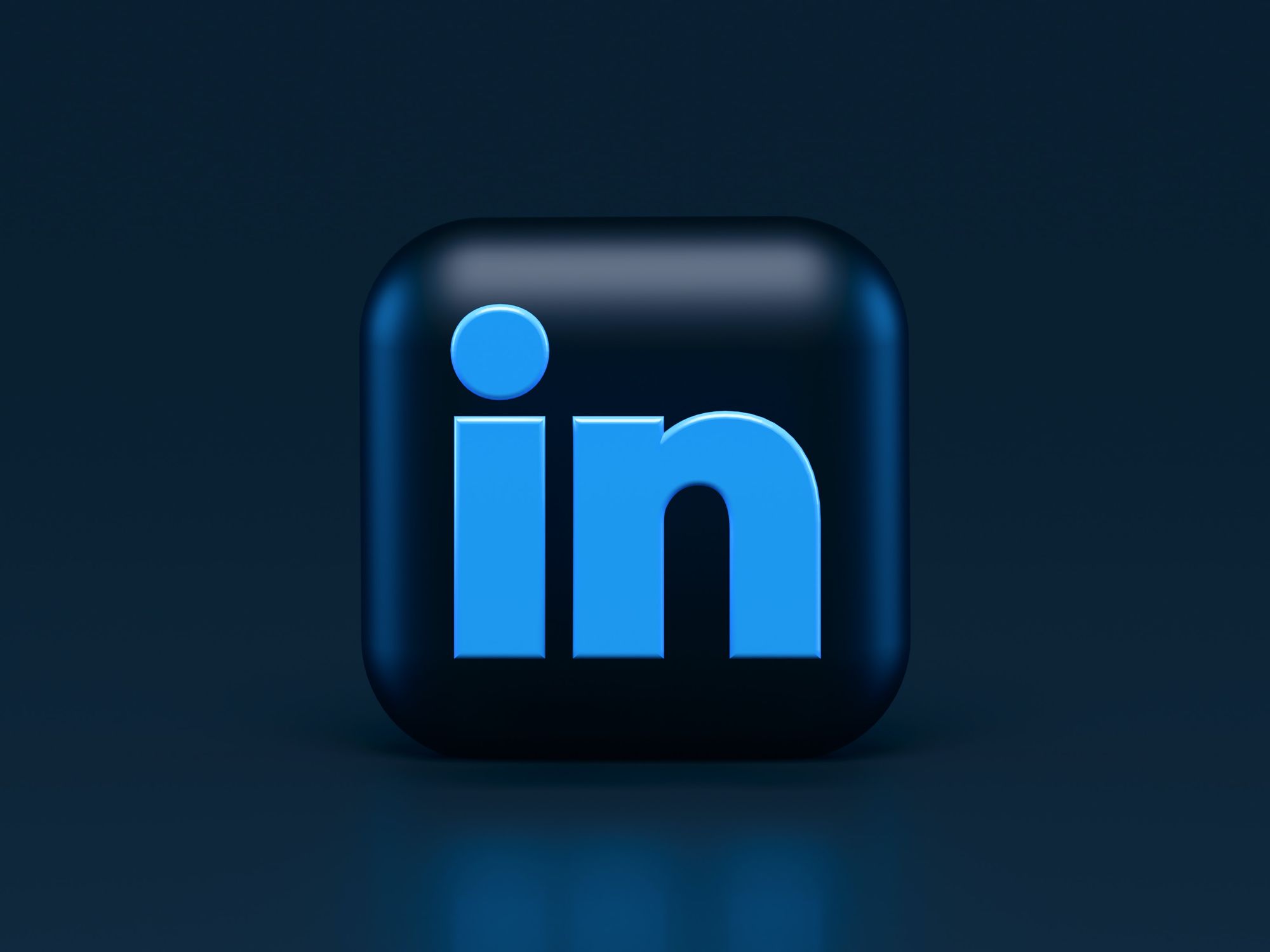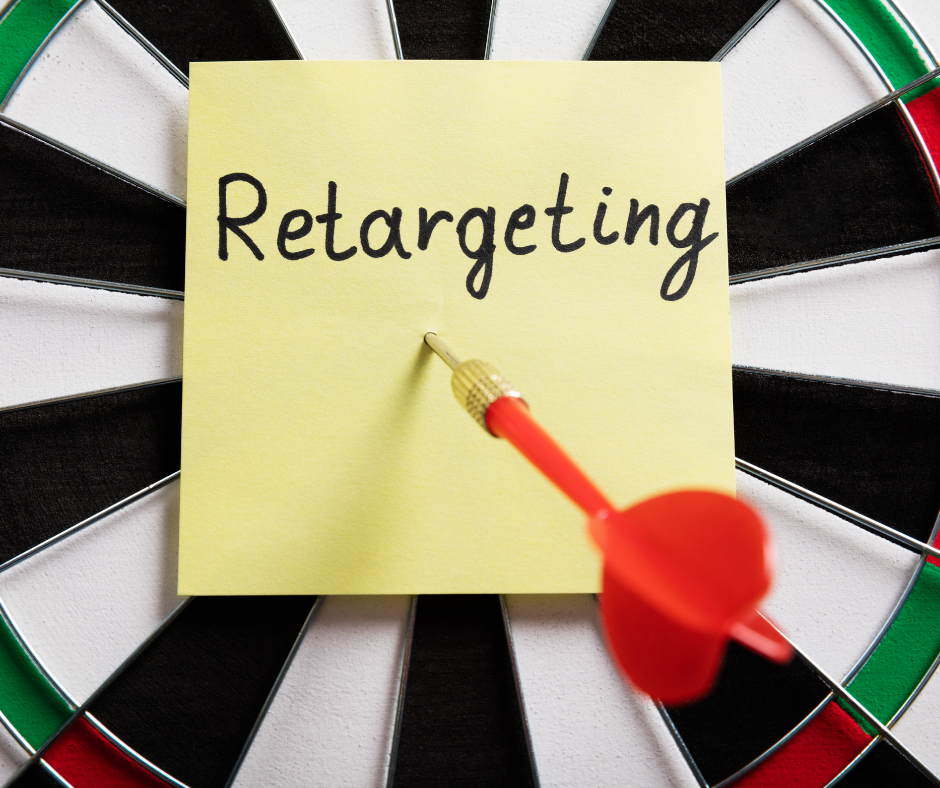97% of the people who visit your site for the first time leave without buying anything, and then they are lost forever. Unless you can bring them back.
This is where you need retargeting marketing. Retargeting marketing campaigns and retargeting marketing strategies are designed in a manner that reminds your website visitors of your products and services after they leave your website without making a purchase.
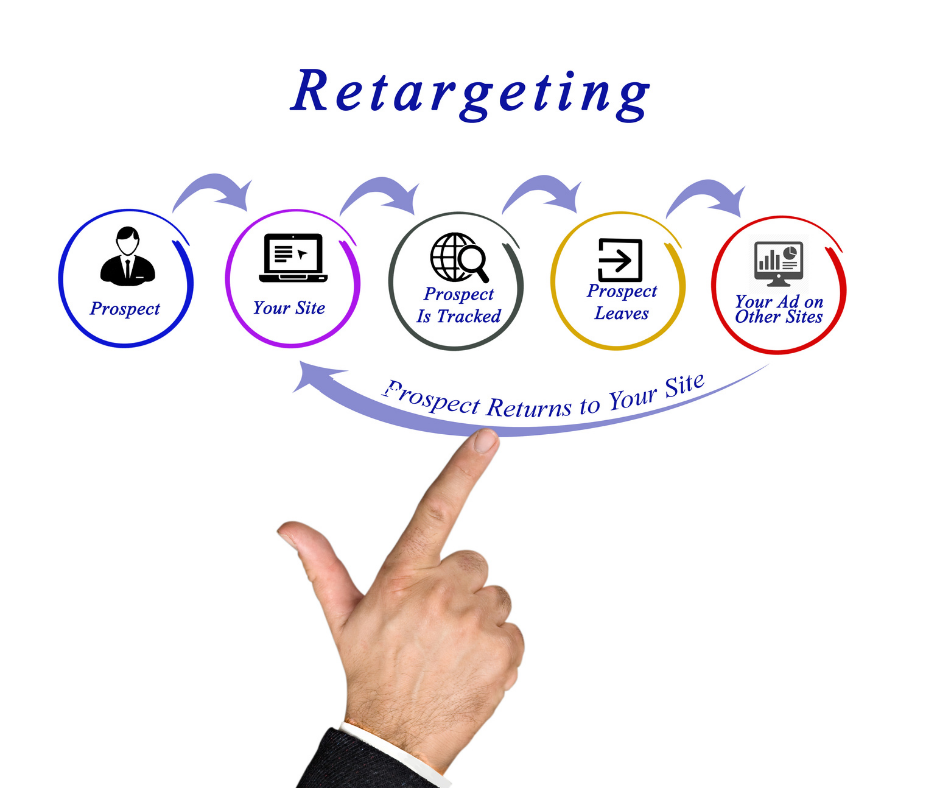
Oftentimes this happens because your visitors are not ready to make a purchase when they first find your eCommerce store or because they got distracted before they could complete making the purchase.
After visiting some specific pages, retargeting marketing lets you re-target your website visitors by showing them relevant visual or text ads when they are visiting other websites. Retargeting marketing campaigns could be done with the help of Google Ads, Facebook retargeting, LinkedIn ads, and through other such retargeting advertising platforms.
Today, retargeting marketing is widely used by marketers to increase their sales, customer loyalty, net profits, and even for improving customer retention as well as encouraging returning customers. Retargeting marketing has hence become one of the important keys for your business’s success.
This article is thus aimed at acquainting you with all the ABCs of retargeting marketing.
What is Retargeting Marketing?
Retargeting marketing is an online marketing strategy wherein your company serves ads to a customer on social media or other external websites that are related to the information that your prospective customer viewed earlier on your company’s own website.
It is a powerful way of re-engaging with your customers, who had previously interacted online with your brand. Hence, the goal of most of the retargeting marketing campaigns is to persuade your sales prospect to take any action that they did not take on their initial visit. This is known as call-to-action, and there are several ways in which you can do this.
By keeping your brand in front of your potential customers after they have left your website, you might be able to persuade them to make a purchase when they need it. This will directly increase your revenue while also improving your cash flow.
Retargeting marketing campaigns work because they let you target specific visitors with specific ads based on which product or service of yours they had already expressed interest in. With the help of search engines and social media channels, you would be able to remind your customers about their pain points and how you can solve them in the best possible manner.
In fact, when your retargeting marketing is optimized in the right way, you would not only be able to convince hesitant buyers to give your brand a chance but also give an opportunity to your existing customers to avail new offers. All of these efforts would help you increase your returns on investment by large values.
Thus, what needs to be kept in mind is that retargeting marketing is not only for those who have visited your website but also for your existing contacts in your database, like your leads and existing customers.
Retargeting marketing works on the understanding that before an individual decides to buy your products or services, they should be able to feel like they know and that they can trust you.
Hence, through retargeting marketing, you would be following one of the rules of thumb of marketing, which says that- in order to help your customers make up their minds about purchasing your products or services, they should have heard your message at least seven times.
Through retargeting marketing, you would be not only able to ensure this but also be able to bring about brand awareness as well as get engaged in brand marketing. Both of these are the key to winning your customers in favor of your business.
When Should You Use Retargeting Marketing Campaigns?
Usually, retargeting marketing campaigns are for those businesses that already have a large following. These campaigns are part of your long-term marketing plans and are best used when:

Promoting Your Bestsellers
Retargeting marketing advertising campaigns are the simple yet effective way of showcasing your top-selling products. In fact, by promoting your bestsellers, you would have better success in converting your visitors into customers. This will improve the ROI on your ads, as well as lead to a higher ratio of operating income as against operating expenses.
Introducing New Collection
When you are launching a new collection, people who are visiting your website can become a great target audience. Through engaging in retargeting marketing campaigns with them, your new collection will catch their attention wherever they go online, hence creating a clear path back to your store for them so that they can check out your new collection.
While using retargeting marketing for introducing new collections to your buyer persona, you can use platforms like Facebook or Google AdWords. Being well aware of basic necessities like how to improve your google ads quality score and getting better reach on your Facebook retargeting ads will help you to reduce the costs incurred for these retargeting marketing campaigns.
Moving Inventory
Slow-moving inventory is a common phenomenon faced by online sellers at one point or another. Retargeting marketing ads is one of the low-budget, low-effort ways of showcasing your surplus inventory to your potential customers and getting them moving. This will directly improve your gross profits and help in reducing COGS as well.
Building Brand Awareness
For your potential customers to purchase from you, they should feel like they know you. Retargeting marketing ads is one of the best ways of keeping your brand on the top of their minds, most likely persuading them to make a purchase when they next have a need for your products and services and visit your website for the same.
Retargeting vs. Remarketing Campaigns
While retargeting and remarketing campaigns are often used interchangeably because they are both aimed at achieving the same marketing objectives, they are different in terms of the tactics used in achieving the following shared goals:
- Target audiences who have already visited your site and are well-aware of your brand.
- Engage and target the people who are most likely to make a purchase.
- Help in starting to build a long-term relationship with your customers through brand awareness and recognition. Such a connection would also benefit you when it comes to relationship selling and sales referral.
However, while retargeting uses paid ads to target the audience who have already visited your website or social media profiles, remarketing, in contrast, primarily uses email marketing to target people who have already done business with your company.
Retargeting marketing hence usually involves cookies and is all about showing your specific prospects with your company’s specific ads on other sites in an ad network after they have left your site. On the other hand, remarketing involves collecting contact information from your sales prospects so that you can deliver email campaigns to them.
Retargeting marketing campaigns are hence about bringing in new audiences and customers for your business, whereas remarketing is majorly about re-engaging existing customers by re-sparking an interest in them for your company.
How Does Retargeting Marketing Work?
Retargeting marketing works by using the “cookies” that are stored by the web browser. Cookies are small pieces of data that remember the users who visited your website or advertisement and also what they clicked on or searched for.
These cookies are a small, unobstructive piece of code on your website which is not noticeable to your website visitor and which does not affect your website’s performance either. Each time a new visitor comes to your website, your code drops an anonymous browser cookie. Later, when your cookied visitors are browsing through the Web, they will let your retargeting marketing ads provider know when to serve ads.
Your retargeting marketing team can then use these cookies’ data to serve ads to the users again. By showing relevant and targeted ads to the users who have shown interest in your business and its products and services, you would be able to increase your brand awareness, strengthen your brand positioning statement and even increase your total conversions.
Such ads, which are a part of your retargeting marketing campaigns, will help you recapture sales in the background, even as you focus on other more important parts of your business like innovation and development, digitizing customer service, etc.
What hence needs to be noted here is that the effectiveness and success of retargeting ads is because it focuses its advertising spend on those people who are already familiar with your brand and have even demonstrated interest in it recently. This type of marketing is therefore preferred the most among all other digital marketing types by the marketers.
This also brings to light the two types of retargeting:
- Pixel-Based Retargeting
- List-Based Retargeting
They both work slightly differently and hence have their own individual advantages.
Pixel-Based Retargeting
Pixel-based retargeting is when you re-display your material to any anonymous site visitor. This is the most common type of retargeting. How pixel-based retargeting works is:
- Someone visits your website.
- An unobstructive piece of Javascript, often referred to as a pixel, is placed on their browser, hence making their browser “cookied.”
- When they surf the Web, the cookie notifies retargeting platforms to serve specific ads based on the specific pages they visited on your website.
Thus, one of the biggest advantages of pixel-based retargeting is that it is timely because your site visitors are retargeted almost as soon as they leave your website without making a purchase. Additionally, this is done on the basis of their behavior and what page they visited on your website.
However, the disadvantage of pixel-based retargeting is that at any given moment, there would be a lower volume of people engaged in retargeting marketing campaigns as it all depends on how often visitors are visiting your website, viewing your website’s pages, and leaving. Additionally, it can become complex and time-consuming to implement JavaScript on so many website pages.
List-Based Retargeting
List-based retargeting works only when you have someone’s contact information in your contact database. In fact, you can even use your existing contact lists for certain types of retargeting ads. In order to do this, you will need to:
- Upload a list of email addresses to a retargeting campaign, usually on a social network like Facebook or Twitter
- The platform will identify users on that network with the same addresses as shared by you and share retargeting ads just with them.
While list-based retargeting is not as commonly used as pixel-based retargeting, it does allow you to have highly customizable criteria for your ads because it is based more on the behavior by letting you choose who goes on which list.
Its disadvantage, however, is that it is quite possible that while an individual gave you one email address, their social media might be using another email address, in which case they would not be able to see your retargeting ads. Additionally, because in list-based retargeting, you have to upload and maintain the list, it is less automatic and timely than pixel-based retargeting.
Retargeting Marketing Goals
Now that we have an idea of how retargeting marketing works and the different types of audiences you can segment it by, we should focus on the ideal goals you should try to achieve through your retargeting marketing campaign. These are:

To Generate Awareness
Having awareness as one of the goals of your retargeting marketing is useful when you want to re-engage your website visitors and tell them about relevant products, services, features, and announcements.
Retargeting ads aimed at generating awareness are usually served to pixel-based lists. However, one of the unavoidable drawbacks of such campaigns is that you are serving less targeted content to the people who have not engaged and interacted with your brand much. In fact, these people might not even be in your contacts database. For such retargeting campaigns, the expected click-through rates are lower than they are for other marketing campaigns.
However, because the goal here is generating awareness, metrics like impressions and engagement are acceptable key performance indicators to track to gauge the effectiveness of your retargeting marketing campaigns. Often awareness campaigns lead to achieving the next campaign goal of conversions.
To Drive Conversions
Your retargeting marketing campaign’s goal will also be driving conversions. Conversions means, for instance, you want people to click on your ad and take the next step, like filling out the landing page form. Conversion goals work best when your entire marketing plan, as well as your sales target, is ready.
Some of the typical conversion metrics that you can use are:
- Cost-per-lead
- Website clicks
- Number of forms submitted
And so on.
One of the biggest advantages of conversion-focused retargeting marketing campaigns is that they can be implemented throughout your sales cycle and help you achieve several marketing objectives. This means that while you can use pixel-based ads for generating leads, list-based ads are used for qualifying those leads.
Hence, for example, under pixel-based ads, conversion takes place when your visitor fills out your form. However, in the case of list-based ads, conversion can take place when longer forms with additional fields are filled by the contacts you sent the ads to.
To Complete the Buyer’s Journey
Retargeting marketing campaign ads can also be used to move the qualified leads down the sales funnel so that they can complete the buyer’s journey.
For example, you are sending a retargeting ad to the list of people who signed up for an eBook with an invitation to get a free trial of your product. After trying, they might realize how useful your product is for them, hence converting them and making them purchase your product.
To Increase Customer Lifetime Value (CLTV)
Customer lifetime value is the amount of money that your business expects from a single customer throughout their entire relationship with your business. The benefit, as well as the goal of retargeting marketing hence, should be to remind your customers of your brand and persuade them to make continuous purchases from you.
The more purchases a particular customer makes from you, the higher is their customer lifetime value.
To Reduce Cart Abandonment
Card abandonment refers to the situation where your customers put some of your products or services in their shopping carts of your online store but then leave your website without checking out and making payment for the same.
Retargeting marketing is very beneficial in such scenarios because it will help you recover your customers who have abandoned their shopping carts. Additionally, retargeting marketing also serves as a reminder to your customers that the product they were interested in is still available and ready to be purchased by them.
To Introduce New Products
When you are well aware of the fact that your customers have visited your website, made a purchase, and shown a general interest in your business, you can use retargeting marketing to introduce new products to them which align with their interests.
Through your retargeting ads, you would be able to lead your customers back to your website and even persuade them to make a purchase. Irrespective of what your exact goal is for a retargeting marketing campaign aimed at introducing a new product, your campaign’s positioning, creatives, and the next step in your conversion process should be aligned with your audience.
The next step of your conversion strategy can be landing pages with CTAs or site pages or a form requesting more information, but they should all be targeted and formatted according to your audience.
However, what needs to be noted here is that list-based retargeting may have low match rates because the users might be using different email addresses on their social media platform from the one they gave you. It hence is crucial that you fuel all your retargeting activities with inbound content.
Audience Segmentation for Retargeting Marketing
For your retargeting marketing campaign, you can segment your audience like this:
Based on Behavior
Your website’s visitor can showcase either of these two behaviors:
- Interested- These are those visitors who browse through your website’s content and maybe even check your other pages like pricing pages, resources page, about us page, etc.
- Not Interested- These are those visitors who visit your website for a mere few seconds, do not visit any other pages of your website, and immediately exit.
As is obvious, the “not interested” segment of your audience is hence the one which has low intent of purchasing your product and services, and expenses that you incur for targeting them with retargeting marketing campaign efforts will only add on to your costs, with no benefit to your ROI.
In contrast, the “interested” segment of your audience has a very high intent of purchasing your products or services. Persuading them with the right messaging will hence be in your favor and improve your financial statements as well as marketing KPIs and financial KPIs.
In fact, your “interested” segment of the audience can further be segmented based on their behavior on your website so that you can use retargeting ads on them accordingly.
If the visitor has gone through the blog or the resources section of your website, and he/she has opted in for an email list in exchange for a free eBook, newsletter, etc., then such visitors should be targeted with soft-sell retargeting ads.
However, if the visitor has visited your product page on your website and has spent time looking at your pricing plan, then it is clear that he/she has a high buying intent and should hence be targeted with hard-sell retargeting ads.
Based on Time
If you want to segment your audience based on time and then retarget them accordingly, it would involve the following three things:
- The time duration between the visitor’s website visit and when they see the first retargeting ad.
- The frequency at which your visitors will see particular ads.
- The time duration between the visitor’s first visit to the website and the time when they stop seeing retargeting ads.
In the case of both Google AdWords and Facebook, the time duration at which your website’s visitor gets added to the retargeting list is set as 30 days by default. However, if in these first 30 days, the visitor visits your website again, in that case, the 30-days cycle is reset automatically. However, both of these platforms give you the option of increasing the time limit if that suits your retargeting marketing campaign more.
What you need to take care of here is that you should not set a time duration through which the ads will be shown too quickly to your website’s visitors as this will irritate them as well as create a negative perception about your brand. This is especially true for visitors who were on your website for only a few seconds.
Additionally, you should also take care of the frequency at which the visitors see the retargeting ads. Showing the same ads more than once on the same website is not a good idea and should be avoided as this will definitely impact your potential customers negatively and even prevent them from buying from you.
Based on Existing Customers
You should also segment your audience into existing and new customers. This is because if you are launching a new product or service or releasing an updated price plan or feature, you should definitely target your existing customers with your retargeting ads. Not only will this increase your upsells, but it can also convince your inactive customers to become more active.
9 Types of Retargeting Marketing
Considering that typically only 2% of the website visitors convert during their first visit, you would be losing on your potential sales and, therefore, net income. In order to prevent this, you should engage in retargeting marketing. However, there are several types of retargeting marketing, and which will suit your business the best is something that you would have to decide. The nine types of retargeting marketing used most often are:

Cross-Channel Retargeting Marketing
If you use cross-channel retargeting marketing, then you would be able to display your retargeting ads across multiple platforms and even be able to deliver platform-specific ad content. Cross-channel retargeting marketing can increase the effectiveness of your campaign because users tend to like to see and interact with specific types of content, depending upon the social media platform being used.
This hence means that you will be creating platform-specific retargeting ads, which will not only help in increasing your brand awareness, thereby also contributing to brand marketing, but also give your audience more opportunities to convert.
Dynamic Retargeting Marketing
Dynamic retargeting marketing ads use pixel data to show your website visitors the most relevant products or services and ads based on the actions they took on your website. For example, showing your website visitors the products he/she was viewing on your website while they are browsing through other websites. This might encourage them to come back to your website and complete their purchase.
Both Facebook and Google can help you to create these highly personalized ads for dynamic retargeting marketing.
Buyer Persona Retargeting Marketing
Buyer persona retargeting marketing is one where you target your ads based on the buyer personas and their specific details like their demographics, purchasing habits, challenges, etc. Detailed information would be needed on your buyer personas, especially their demographics, so that you can set up retargeting ads for them across multiple platforms.
The benefit of this type of retargeting marketing is that it will give better quality traffic to your website and, therefore, higher ROI.
Contextual Retargeting Marketing
Contextual retargeting marketing involves the exchange of pixels between sites that are highly relevant to a searcher. By doing this, you would be able to target each other’s visitors and get increased sales.
For example, an airline and a local hotel site target each other’s visitors based on the destinations that were searched. As is evident, contextual retargeting marketing would be timely, and this will ensure higher conversion rates if carried out properly.
SEM/SEO Retargeting Marketing
SEM and SEO retargeting marketing is related to the search terms used before arriving on your website. If you merge someone’s search terms and their action on your website, you would have a deeper understanding of their intent. Using this understanding, you should then refine your creative and perfect message for them in your retargeting ads.
Search Retargeting Marketing
Search retargeting marketing basically involves you going after the individuals on search engines who have searched for keywords or phrases relevant to your business. However, when this is the basis of your retargeting ads, you are making assumptions about the visitor’s intent.
This is because even though they did search keywords or phrases relevant to your business, they still might not be ready for making a purchase or be bombarded with “buy now” ads. Hence, if you are opting for search retargeting marketing, you need to be sure of the intent of the visitor and then design creatives for their retargeting ads accordingly.
Email Retargeting Marketing
Email retargeting marketing involves you engaging again with those leads who have opened your email. In fact, email retargeting is one of the best ways of making your email marketing campaigns even more effective.
Creating an email retargeting marketing campaign that corresponds with a specific drip campaign is pretty simple. All that you need to do is add a retargeting code in the HTML or signature of your emails. Each lead who then opens your email will start seeing your ads all across the web.
Facebook Retargeting Marketing
Facebook retargeting marketing involves the usage of the audience’s data to show ads and target the people who have already visited your website. It hence helps you to advertise to potential customers as well as to the lost leads by leveraging data from different profiles to help you connect with the right audience.
The advantages of Facebook retargeting marketing are:
- Facebook has a large audience.
- With the amount of data that Facebook collects of its users, there is a high probability that the leads you lost are seeing your retargeting ads.
To set up your Facebook retargeting ads, you will set an ad campaign and choose its audience set. However, because it is a retargeting ad, you will toggle a switch in the Ad Manager, which specifies that this is a retargeting ad. The benefit of doing this is that the software will know how to filter to ensure the right target market for your audience.
Google Ads Retargeting Marketing
Google offers various tools that allow brands to reach and re-engage with website visitors, leads, and customers. These tools can be used to display various types of ads to your retargeting audience. Some of the types of ads include but are not limited to text and dynamic ads, image ads, video ads, and product shopping ads. These tools, however, are:
- Standard Retargeting Marketing: Shows your business’s ads to its past visitors across the sites and apps they visit.
- Dynamic Retargeting Marketing: This allows you to display ads that include the specific products or services that were viewed by the visitors on your website or app.
- Remarketing Lists for Search Ads (RSLA): Your business’s ads will be shown when your website’s past visitor does a follow-up search for a product or service on Google after they have left your website.
- Video Retargeting Marketing: Here, your ads are shown to those people who have viewed your brand’s YouTube video or interacted with your channel.
- Customer List Retargeting Marketing: This tool allows you to upload your list of customer contact information so that your ads will be displayed across Google products when the customers signs into Google.
- Remarketing for Mobile Apps: Through this tool, your retargeting ads are shown to those visitors who have either used mobile apps or mobile websites.
In fact, to reduce your expenses here, you should simultaneously focus on improving your Google Ads quality score. This will give you double benefits, less investment, and more conversions, therefore also improving your cash flow.
Optimizing Retargeting Marketing
In order to engage the audience, retargeting marketing ads consist of images, videos, and other such rich media types. These are hence display ads, with images and copy that should be relevant to your product’s features or offers with which you are trying to grab your audience’s attention.
Additionally, by creating different display ads for each retargeting audience segment, you would be able to ensure that the retargeting ads appeal to the audience you are targeting. However, some of the elements that are must in order to have an optimized retargeting ad are:
- An Engaging Headline: An engaging headline is one that should be relevant to the visitor’s experience on your website and should be written in a manner that grabs their attention.
- Relevant, Visually Appealing Media: To make your retargeting ad visually appealing, you can either add a static image or an animation on your display ad. However, take care that your chosen media is relevant to the offer showcased on the ad copy.
- A Click-Worthy CTA Button: This should have a contrasting color and an actionable, personalized copy on it like, for example, “show me the eBook.”
- Actionable Copy: The copy on your display ad should quickly get to the point and offer an incentive to your visitors for clicking, which will definitely result in increasing clicks, and therefore the possibility of more sales.
Where Does Retargeting Marketing Fit in Your Overall Marketing Strategy?
According to Google, if you combine retargeting marketing ads with your other advertising, it will help you sell 50% more of your products and services.
By using sources like Facebook ads, Instagram ads, email marketing, etc., you would be able to drive more traffic to your website. Now, if someone visits and then leaves your website without making a purchase, in that case, you would target them through retargeting marketing ads. These ads will show them how your products or services are the best fit for you and repeated retargeting will ensure that they remember you when they are ready to make a purchase.
Note, once they have made their purchase and you have collected their email address at the checkout, you should send them a welcome or first-purchase automation email to keep them engaged with your brand. Later on, you can even target your existing customers with your retargeting marketing advertisements.
Hence, retargeting marketing is a type of marketing that strengthens your overall marketing strategy and ensures that it succeeds, even in terms of an increased or better performing net profit ratio. It thus works best only when it is part of a larger digital marketing strategy, especially in conjunction with outbound and inbound marketing or demand generation.
For example, marketing strategies like content marketing, performance marketing, AdWords, landing pages, and targeted display are great for driving traffic to your website but are not helpful when it comes to optimizing your conversions.
Conversely, retargeting marketing campaigns are great for increasing conversions but not for driving traffic to your website. Hence, retargeting marketing works best when it is a part of an overall marketing strategy.
How Can Deskera Help You with Retargeting Marketing?
Deskera CRM is a software equipped with features that will be able to assist you with retargeting marketing. In fact, with Deskera CRM, you will be able to automate several of your tasks related to retargeting marketing.
For instance, you will be able to segment your audience as per their demographics or the resources that they downloaded. For instance, a group of your website visitors who downloaded an eBook are segmented as one group, while another group of visitors who signed up for a free trial is segmented as a different group. Based on their segments, the audience in each would be targeted with retargeting ads.
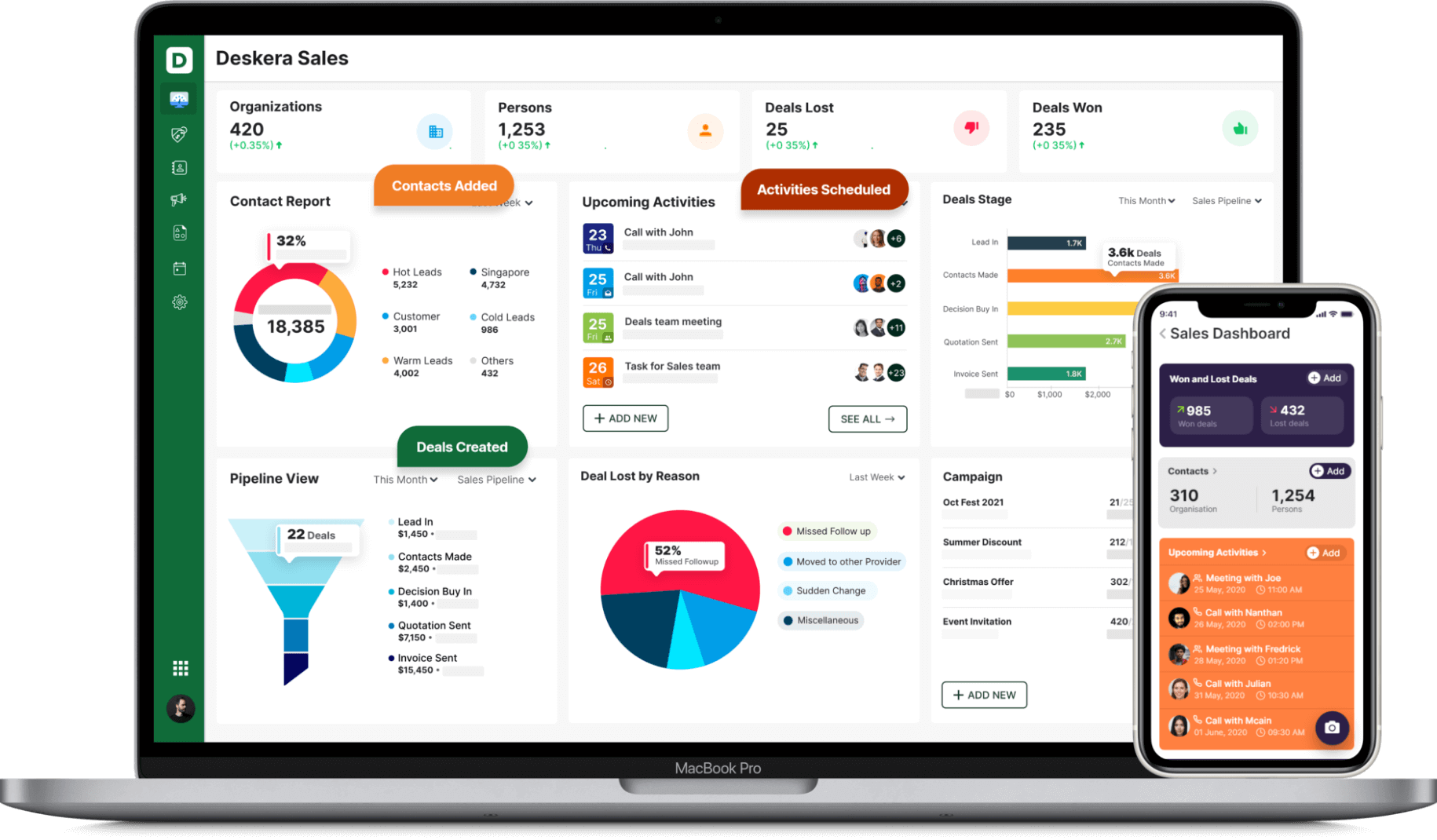
In fact, you would even be able to export all your contacts with their detailed information and custom fields in Deskera CRM. These contacts with their information will further help you with not only list-based retargeting ads but also help you in targeting your contacts across different social media platforms.
Additionally, by having full visibility in your sales pipeline, along with the real-time updated status of each deal, you would be able to use this information further to target those potential customers with retargeting ads accordingly, hence even closing deals faster.
Lastly, in order to help you make the right decisions in regards to retargeting marketing, you would have the help of real-time insights on your CRM dashboard, which would also help you figure out your marketing attribution.
Key Takeaways
Retargeting marketing is a boon, especially in this digital world where everything is so much more accessible combined with an abundance of options and offers. Through retargeting marketing, your business will get incredible opportunities to target the exact customer you want by giving you a chance to again display your brand and message to the audience who has already shown interest.
Through retargeting marketing, not only would you be able to win their trust and confidence in your brand, but also get a chance to engage with them, show them that you care by incorporating your customers’ feedbacks in your products and services, and then by presenting them with your new and improved products and services.
Retargeting marketing hence works best when:
- You are promoting your bestsellers.
- You are introducing a new collection.
- You have slow-moving inventory.
- You are building your brand awareness.
Your retargeting marketing campaign can, however, be pixel-based retargeting or list-based retargeting, helping to achieve some or several of these goals:
- To generate awareness
- To drive conversions
- To complete the buyer’s journey
- To increase the customer lifetime value
- To reduce cart abandonment
- To introduce new products
For achieving these goals, you should segment your audience for your retargeting marketing ads based on:
- Their behavior
- Time
- Whether they are an existing customer or a new customer
The several types of retargeting marketing ads that you can choose and opt from are:
- Cross-Channel Retargeting Marketing
- Dynamic Retargeting Marketing
- Buyer Persona Retargeting Marketing
- Contextual Retargeting Marketing
- SEM/SEO Retargeting Marketing
- Search Retargeting Marketing
- Email Retargeting Marketing
- Facebook Retargeting Marketing
- Google Ads Retargeting Marketing
Your retargeting marketing ads should be optimized in order to get the maximum benefits from them. Together with other marketing campaigns, retargeting marketing will help you in achieving your marketing and business goals and in maximizing your profits.
Related Articles
